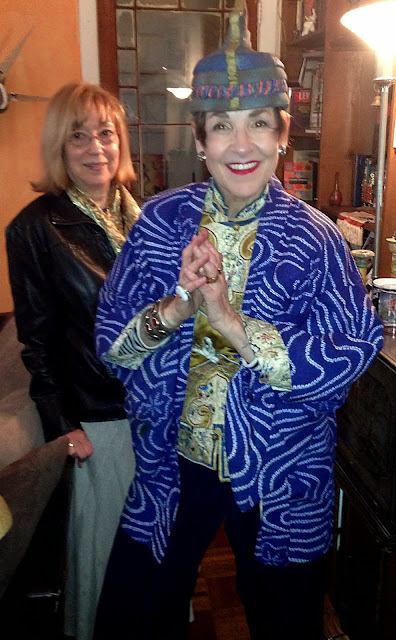Fumbling Toward Adulthood
Valerie asks: what defines adulthood? Different people will have different milestones: your first job, your first car (not the one your parents gave you - the one you bought with your own money), first apartment, marriage, first child. But what defines adulthood from a child's perspective?
I was raised in a house full of books. My father had the lion's share, having majored in English on the GI bill after World War II, but my mother saw to it that I had my own collection early on, and taught me how to read before I started school. There may have been an element of self-preservation in that. Now that my parents have both passed on, it can be told: my mother did all my father's graduate research while he was going to school during the day and teaching English at night to support our family. I passed many an hour in the children's section of the palatial Brooklyn Public Library while my mother was researching and writing my father's term papers, so it was in her interest to give me the tools to keep me happily occupied while she was in the musty fusty gravely serious and cerebral adult's section (to which I hardly ever dared venture).
At home, I noticed early on that adult books had no pictures in them. My initial impression of this was that books without pictures were a bit sad, and didn't pique the imagination at all. I thought children's books were so much more stimulating, with pictures on every page.
The Winnie-the-Pooh series was far and away my favorite during my childhood, and my mother periodically gave me animals to match the Pooh characters, some of which I still have. They didn't look the same as the ones in the book (this was before the Great Era of Targeted Marketing), but I had a bear and a kangaroo with a joey, and a tiger and a donkey and an owl (or Wol, as he is often referred to in the books).
One Christmas I received a copy of The World of Pooh - a compilation of all the Pooh that was fit to print, with countless charming illustrations on almost every page. Some two hundred pages into this three hundred some odd page book, I had an epiphany, and completely changed my views on illustrations in children's books. Aha, I realized, adult books had no pictures because adults could conjure up their own images. Well, I thought, I can conjure up my own images, and don't need illustrations. The text is the thing. The only thing. The everything. So I got the huge eraser out of the stationery drawer, and set to work erasing one of the suddenly tiresome images. The eraser did not work, so I used the next best thing - a bit of spit, and my index finger.
Looking back at what I did, I am horrified, but at the time I saw this as a small but determined step I could take out of babyhood and into adulthood. As it happened, removing the illustrations turned out to be a far larger undertaking than I had bargained for, so, in a move that should probably be recorded in the annals of child psychology, I economized by strategically rubbing out only the star figures in the illustrations. I did this to several pages until I saw the unintended consequences of my actions: in my fervor to make The World of Pooh conform to adult publishing standards, I had gone right through the paper, and destroyed the all-important text on the other side.
Here is some of my handiwork below. See the big white space in the center of the illustrated page? (It's the same one I'm pointing to in the first photo.) And maybe you can see the hole in the first paragraph on the left page, too.
I don't actually remember my mother's reaction to all this, which is great, because it probably means she didn't freak out in front of me, or yell at me or punish me for what must have appeared, on the face of it, to be an inexplicable, wanton act of destruction from an otherwise well behaved child. But I do know how she responded: she went out and bought me a pristine copy.
I still have both, and cherish them for different reasons.
(Below is the undamaged copy, and the same page the way it's supposed to look.)




























































